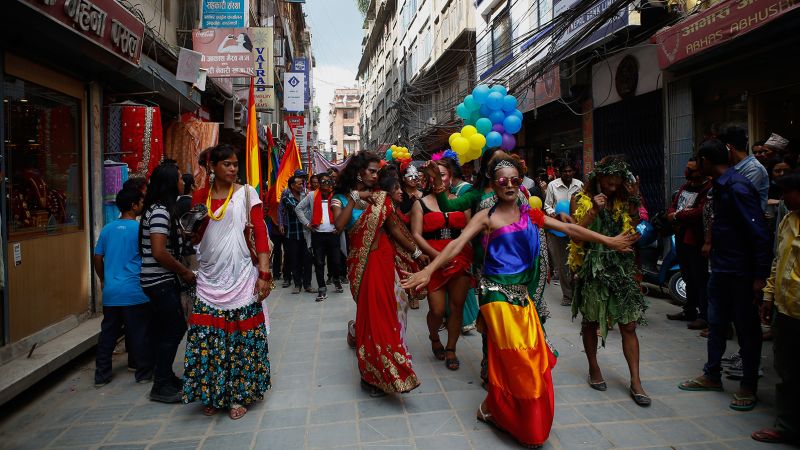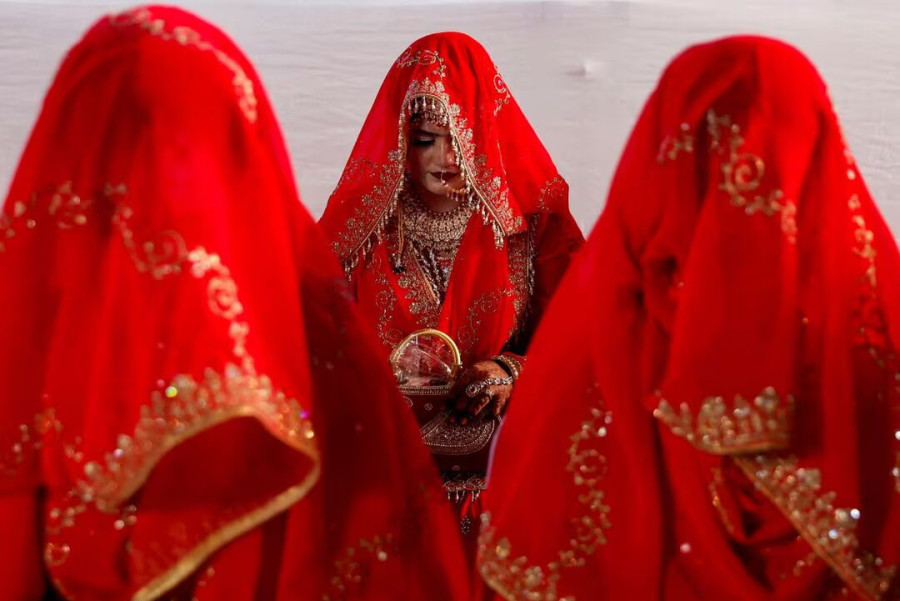Now Reading: Same-Sex Marriage in Nepal: Law, Court Orders, Implementation and the Road Ahead
-
01
Same-Sex Marriage in Nepal: Law, Court Orders, Implementation and the Road Ahead
Same-Sex Marriage in Nepal: Law, Court Orders, Implementation and the Road Ahead

Nepal has emerged in South Asia as an unexpectedly dynamic jurisdiction for LGBTQ+ rights. Over the past few years, a combination of strategic litigation, progressive court orders and administrative steps has put same-sex marriage firmly on the public and policy agenda.
Nepal has emerged in South Asia as an unexpectedly dynamic jurisdiction for LGBTQ+ rights. Over the past few years, a combination of strategic litigation, progressive court orders and administrative steps has put same-sex marriage firmly on the public and policy agenda. Yet legal recognition remains partial: court directions and civil-registration circulars have created a de facto path for registration in some places, while statutory law — notably the Civil Code — still defines marriage in gendered terms. The result is cautious progress laced with legal uncertainty and uneven local practice.
This article explains what has changed, what protections registered same-sex unions currently enjoy (and do not), how the system actually works on the ground, the political and administrative bottlenecks that remain, and the practical next steps necessary to turn judicial gains into durable, nationwide marriage equality.
A brief legal and historical background
Nepal’s constitutional and judicial history has long been receptive to human-rights claims. Landmark constitutional and Supreme Court decisions prior to the marriage debate established legal recognition and protections for sexual minorities. Those rulings reflected a broader shift in Nepal’s post-monarchy jurisprudence toward rights-based remedies and affirmative administrative action.
Despite progressive judicial attitudes, Nepal’s written marriage laws have remained conservative: the Civil Code and related statutes still use traditional, binary language describing marriage as a union between a man and a woman. That statutory text created a gap between the aspirational pronouncements of the judiciary and the letter of primary legislation — a gap that litigants, civil-society organisations and reformist officials have sought to close in different ways.
The judicial turning point: interim orders and what they require
The most consequential legal developments were judicial interim orders that directed executive agencies to recognise and register marriages of sexual-minority couples. Those orders did not themselves rewrite the Civil Code; rather, they instructed government departments and local registrars to take administrative measures to ensure same-sex couples could have their unions recorded.
Two features of the judicial approach matter:
- Practical remedy rather than statutory overhaul. The courts provided an immediate administrative remedy (registration) while leaving the heavier task of legislative reform to Parliament. This created a time-limited, pragmatic pathway to recognition without forcing a legislative impasse.
- Room for administrative innovation. Recognising the statutory gap, the judiciary permitted the civil-registration authority to create workable procedures (for example, a separate register for same-sex unions) so that couples could secure official documentation pending full legislation.
These orders gave activists and couples a real foothold — registration in the civil record — but stopped short of dictating the full suite of rights normally conferred by marriage statutes (inheritance entitlements, spousal benefits, tax treatment, adoption rights, etc.).
Administrative response: registers, circulars and uneven practice
Following the court directions, the central civil-registration authority issued administrative circulars advising local registrars to accept marriage applications from same-sex couples and to record those unions in a designated register. This administrative step was significant: it operationalised the court’s remedy, permitting some couples to obtain official recognition on civil documents such as marriage certificates.
However, administrative measures are not uniform law, and their implementation has been uneven:
- Some localities complied rapidly. A number of municipal and district registrars began processing applications and issuing certificates, often after receiving succinct instructions or interpreting the court’s orders as mandatory.
- Other offices refused or delayed. In more conservative districts or where officials were uncertain of legal cover, clerks and registrars refused applications, insisted on the Civil Code’s “man and woman” language, or requested formal ministerial orders.
- Practical inconsistencies. Where registration has occurred, registries and agencies (social security, tax, pension, health) have not uniformly accepted the marriage status as equivalent to heterosexual marriages, creating piecemeal benefits at best.
In short, administrative circulars and court directions created a patchwork of recognition: a hopeful opening for same-sex couples, but not a guarantee of universal rights.
What registration currently achieves — and what it does not
Understanding the real-world impact of registration requires separating symbolic/legal recognition from the substantive bundle of marriage rights.
What registration can deliver now
- An official civil-registration entry and certificate that proves a couple’s relationship was recorded.
- A stronger position for accessing identity and civil-status evidence, which can be important for travel, medical proxy requests, and some administrative processes.
- A legal foothold to press claims for specific entitlements (for example, by filing subsequent litigation or administrative appeals).
What registration generally does not (yet) guarantee
- Automatic inheritance or succession rights: statutory inheritance rules typically presuppose spouses defined under the Civil Code; absent legislative change, claims may require courts to interpret registration as conferring spousal status.
- Social security, pension and employment benefits: these programs often require explicit statutory recognition or agency policies to extend protections to same-sex partners.
- Adoption and parental rights: family-law benefits such as joint adoption, parental presumption, and custody rights are still governed by statutes that assume heterosexual spouses.
- Tax and immigration entitlements: tax codes, benefits rules and immigration categories require statutory or regulatory adjustments to treat same-sex spouses identically.
Thus the certificate is a step forward, but it is usually a first step: powerful symbolically and administratively but insufficient for many everyday legal protections.
Political dynamics and the legislative bottleneck
The judiciary’s orders and administrative steps provoked predictable political debate. Some lawmakers and conservative interest groups expressed concern about rapid change and argued for parliamentary deliberation. Political reluctance to rush a full statutory overhaul is partly cultural and partly practical: comprehensive legislative reform implicates family law, inheritance law, social-security statutes, taxation, and public-service regulations — a complex package requiring cross-party consensus.
This political reality explains why legislators have not yet enacted inclusive marriage legislation. Courts can provide interim remedies through administrative instructions, but Parliament remains the body that must reconcile related laws and provide a coherent, nationwide framework.
Implementation challenges and lived-experience hurdles
Even where registrars cooperate, same-sex couples can face real hardships:
- Administrative confusion across agencies. A marriage certificate does not automatically translate into recognition by banks, employers, or insurance providers; many agencies wait for formal regulatory guidance before changing their checklists.
- Social stigma and local resistance. In more conservative communities, couples can face social backlash, harassment or reluctance among officials to record their unions.
- Litigation as a necessary backstop. Where administrative recognition is resisted, couples and NGOs often must resort to individual litigation — slow, expensive, and emotionally draining.
These practical barriers underscore why legislative clarity is essential: it converts ad hoc judicial and administrative victories into lasting, enforceable rights.
Comparative lessons and international context
Countries that have achieved full marriage equality typically followed one of two paths: legislative reform (statute-by-statute changes) or constitutional/judicial rulings that compel universal application. Nepal’s current hybrid trajectory — judicially prompted administrative recognition awaiting parliamentary codification — mirrors transitional stages seen elsewhere.
Two policy lessons from comparative practice are relevant:
- Comprehensive law reform is better than piecemeal fixes. Piecemeal administrative solutions leave gaps in entitlements and produce unequal regional outcomes.
- Parallel regulatory updates are critical. Marriage equality is only meaningful when social-security, tax, immigration, adoption and employment laws are synchronised with the new definition of marriage.
Nepal’s activist community and policy planners can use these lessons to craft a legislatively minded roadmap that avoids fragmentation.
Recommendations: turning interim recognition into durable equality
For advocates, policymakers and civil servants who want to cement the gains and reduce uncertainty, the following steps are practical and achievable:
- Draft inclusive marriage legislation now. Parliament should amend the Civil Code and related statutes to define marriage inclusively and specify the attendant rights and responsibilities.
- Issue binding central instructions for all registrars. Until legislation passes, the executive should issue a clear, binding order to all local registration offices directing uniform acceptance of same-sex marriage applications and their recognition by central agencies.
- Update ancillary laws and regulations simultaneously. Social security, tax, inheritance and adoption rules must be revised to prevent contradictory interpretations. A cross-ministerial working group can prepare synchronized draft amendments.
- Train and sensitise officials. Local registrars, social-security officers, tax officials and judiciary staff need training on the legal changes and the human impacts of consistent application.
- Public awareness and consultation. Broad consultation with communities, religious leaders and civil society can reduce backlash and increase social buy-in for reform.
- Monitoring, data and impact assessment. Government should collect data on registrations, disputes and administrative barriers and publish periodic assessments to guide further reform.
Conclusion: progress tempered by legal work still to do
Nepal stands at a pivotal moment. Judicial courage and responsive civil-registration measures have created real opportunities for same-sex couples to secure official recognition. But recognition on paper — or in a separate register — is not the same as full, enforceable marriage equality. The remaining work is legislative, administrative and social: Parliament must amend the law, regulators must align ancillary statutes and agencies, and society must be prepared for legal equality to translate into everyday protections.
For LGBTQ+ advocates and policymakers in Nepal, the pragmatic path is clear: use the judicial opening to press for carefully drafted, holistic legislation that secures both the symbolic recognition of marriage and the full package of legal rights that make marriage meaningful.










